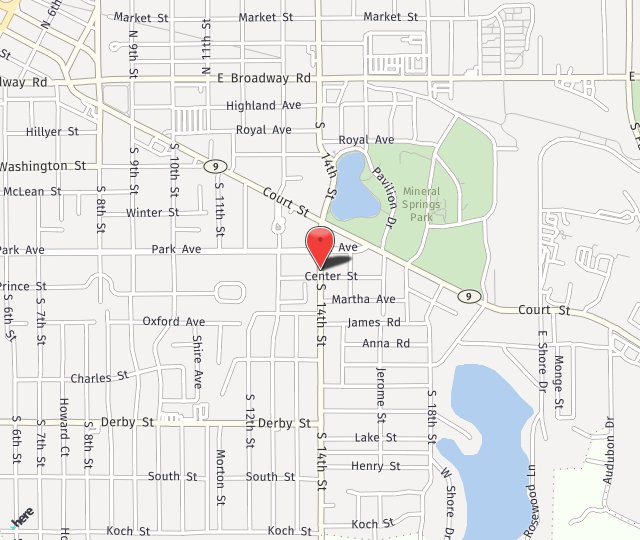 Diabetic Eye Disease Awareness Month, observed every November, aims to spotlight the significant impact of diabetes on vision. With millions of people affected globally, the campaign emphasizes the importance of early detection, prevention, and treatment of diabetic eye diseases. This month-long awareness campaign also provides an opportunity to educate those living with diabetes about how to protect their vision through regular eye exams and proper management of diabetes.
Diabetic Eye Disease Awareness Month, observed every November, aims to spotlight the significant impact of diabetes on vision. With millions of people affected globally, the campaign emphasizes the importance of early detection, prevention, and treatment of diabetic eye diseases. This month-long awareness campaign also provides an opportunity to educate those living with diabetes about how to protect their vision through regular eye exams and proper management of diabetes.
What is Diabetic Eye Disease?
Diabetic eye disease refers to a group of eye problems that people with diabetes may face as a result of the condition. Diabetes can damage the blood vessels in the eyes and lead to various serious vision complications, including:
- Diabetic Retinopathy: The most common diabetic eye condition, diabetic retinopathy occurs when high blood sugar levels damage the blood vessels in the retina. This can lead to vision problems such as blurred vision, floaters, or even blindness in severe cases. As the disease progresses, the blood vessels may swell, leak, or grow abnormally, causing retinal damage.
- Diabetic Macular Edema (DME): DME occurs when fluid builds up in the macula, the part of the retina responsible for sharp, central vision. This can cause swelling, which results in blurry vision and can severely affect the ability to read or recognize faces.
- Cataracts: People with diabetes are more likely to develop cataracts at a younger age compared to those without the condition. Cataracts cause the lens of the eye to become cloudy, leading to impaired vision.
- Glaucoma: This condition involves increased pressure in the eye, which can damage the optic nerve and lead to vision loss. People with diabetes have a higher risk of developing glaucoma.
The Importance of Regular Eye Exams
Diabetic eye disease often progresses silently, with no early symptoms. By the time noticeable vision problems occur, significant damage may have already taken place. This is why regular eye exams are critical for early detection and management. Experts recommend that individuals with diabetes have a comprehensive dilated eye exam at least once a year.
During these exams, an ophthalmologist or optometrist can detect changes in the blood vessels of the retina and other early signs of diabetic eye disease. Early intervention, such as controlling blood sugar, blood pressure, and cholesterol levels, can help prevent or delay vision loss.
Risk Factors for Diabetic Eye Disease
In addition to having diabetes, other factors can increase the risk of developing diabetic eye disease:
- Poor blood sugar control
- High blood pressure
- High cholesterol
- Smoking
- Obesity
- A longer duration of diabetes
Symptoms to Watch For
While diabetic eye disease can be asymptomatic in the early stages, there are several symptoms that should prompt an immediate visit to an eye care professional:
- Blurred vision
- Dark spots or floaters in your field of vision
- Difficulty seeing at night
- Sudden vision loss in one or both eyes
- Flashes of light
These symptoms may indicate the progression of diabetic retinopathy or other serious eye conditions.
Preventing Diabetic Eye Disease
Although diabetes-related eye disease is common, taking proactive steps can significantly reduce the risk of developing vision problems. Here are several prevention strategies:
- Maintain Healthy Blood Sugar Levels: Proper management of blood glucose levels is crucial to preventing diabetic retinopathy and other complications. This can be achieved through a balanced diet, regular exercise, and medication as prescribed by your healthcare provider.
- Monitor Blood Pressure and Cholesterol: High blood pressure and cholesterol can worsen diabetic eye conditions. Keeping these levels in check can protect your eyes and overall health.
- Quit Smoking: Smoking increases the risk of diabetic retinopathy and other eye diseases. Quitting can lower the risk of vision loss.
- Regular Eye Exams: As emphasized, annual comprehensive dilated eye exams are essential for catching early signs of diabetic eye disease. Early detection is key to preventing severe vision loss.
Treatment Options for Diabetic Eye Disease
For those diagnosed with diabetic eye disease, treatment options depend on the type and severity of the condition. Common treatments include:
- Laser Therapy (Photocoagulation): Laser treatment can help reduce swelling in the retina and prevent abnormal blood vessel growth. This is often used in the treatment of diabetic retinopathy and macular edema.
- Intravitreal Injections: Medications can be injected directly into the eye to reduce inflammation and slow the progression of diabetic retinopathy or DME.
- Surgery: In advanced cases, surgery may be needed to repair damaged blood vessels or remove scar tissue from the retina.
While these treatments can help manage the disease, prevention remains the most effective way to protect your vision.
The Role of Awareness
Diabetic Eye Disease Awareness Month plays a crucial role in educating the public about the relationship between diabetes and vision health. Many people with diabetes are unaware that their condition can affect their eyesight, and by the time they notice symptoms, irreversible damage may have occurred.
This awareness campaign encourages people with diabetes to take charge of their eye health by scheduling regular exams and making lifestyle changes that protect their vision. It also serves as a reminder that early intervention can prevent the progression of diabetic eye disease.
Conclusion: Protect Your Vision
November’s Diabetic Eye Disease Awareness Month is a reminder that maintaining good vision is possible with the right strategies. People living with diabetes can protect their eyesight by managing their condition, undergoing regular eye exams, and seeking prompt treatment when necessary.
Vision loss from diabetic eye disease is often preventable, but it requires early detection and a proactive approach to care. As we observe Diabetic Eye Disease Awareness Month, make it a priority to educate yourself, your loved ones, and your community about the importance of eye health for people with diabetes.
This November, commit to preserving your vision by scheduling your comprehensive eye exam with Bond Eye and taking the steps needed to manage your diabetes effectively. Your eyes—and your future self—will thank you.


